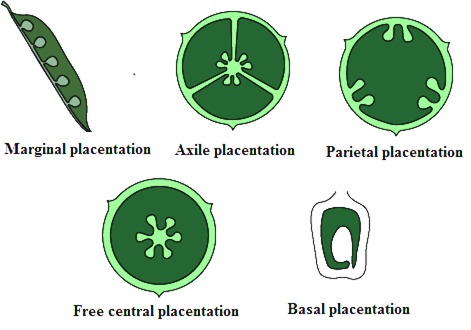 Long Answer Type
Long Answer Type(a) Give any three characters that have developed during human evolution.
(b) Explain the term chemogeny.
(c) Give any two distinctive features of Dryopithecus.
(a) Explain the evolution of giraffe’s neck according to Lamarck’s theory of evolution.
(b) Give two chromosomal similarities between man and apes.
(c) Name any two temporary embryonic structures in vertebrates which provide evidence for evolution.
(a) Persons suffering from sickle cell anaemia are at an advantage in Malaria infested areas. Explain.
(b) Define the term gene flow.
(c) What are analogous organs? Describe with one example from the plant kingdom.
(a) With the help of diagrams, name and describe the different types of placentation seen in angiosperms.
(b) Give four points of anatomical differences between a monocot stem and a dicot stem.
(c) Define the following terms:
(i) Racemose inflorescence
(ii) Osmotic pressure
(a) Placentation refers to the arrangement of ovules inside the ovary. It is of five basic types:
(i) Marginal placentation - The ovary in which the placenta forms a ridge along the ventral suture of the ovary and the ovules develop on two separate rows is known to have marginal placentation. This type of placentation is found in peas.
(ii) Parietal placentation -When the ovules develop on the inner walls of the ovary, the ovary is said to have parietal placentation.
(iii) Axile placentation - In axile placentation, the placenta is axial and ovules are attached to it. Examples include China rose, lemon, and tomato.
(iv) Basal placentation - The ovary in which the placenta develops from its base and a single ovule is found attached to the base is said to have basal placentation. It is found in marigold and sunflower.
(v) Free central placentation - In free central placentation, the ovules develop on the central axis while the septa are absent. This type of placentation is found inDianthus and primrose. 
(b)
| Monocot Stem | Dicot stem |
| 1. Vascular bundles are numerous and scattered. | 1. Vascular bundles are few in number and are arranged in a ring. |
| 2. Pith is absent | 2. Pith is present. |
| 3. Trichomes absent | 3. Trichomes are present. |
| 4. Bundle sheath is present | 4. Bundles sheath is absent. |
(a) Draw a diagram of the internal structure of the human ovary.
(b) Define the term water potential.What are its components? Explain.
(c) Give definition and importance of:
(i) Imbibition
(ii) Parturition
(a) Give four adaptations in flowers pollinated by insects.
(b) Describe the mass flow hypothesis for translocation of organic solutes (food) in plants.
(c) Write a brief note on the causes of infertility.
(a) Give any four reasons for Mendel’s success.
(b) Briefly describe the technique employed in DNA fingerprinting.
(c) Give any two features of Genetic Code.
(a) Explain the mechanism of action of T cells to antigens.
(b)Explain how insulin can be produced using recombinant DNA technology.
(c) What is pisiculture? Give one advantage.
(a)Name the causative organism andpreventive measures for each of the following:
(i) Swine flu
(ii) Typhoid
(iii) Filariasis
(iv) Syphilis
(b)State four causes and four consequences of population growth.
(c)Differentiate between:
(i)Cannabinoids and Barbiturates
(ii)Biotic potential and Carrying capacity
